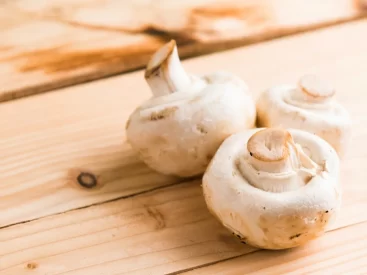Lion’s Mane, a popular medicinal mushroom, grows in the forests of North America. It is crucial to understand the natural habitat of lion’s mane for those interested in foraging or cultivating this valuable mushroom. With its unique flavor and potential health benefits, lion’s mane has gained popularity in recent years, making it essential to know where it grows and how to find it.
Whether you are a mushroom enthusiast or a curious forest explorer, this article will provide valuable insights into the natural habitat of lion’s mane, helping you appreciate its ecological function and potential for cultivation.
Lion’s Mane Natural Habitat
Lion’s mane, a medicinal mushroom with a unique taste and texture, thrives in the forests of North America. Its natural habitat is characterized by specific preferences and ecological niches that promote its growth and sustainability.
In general, lion’s mane prefers to grow on hardwood trees such as oak, maple, and beech, establishing a symbiotic relationship with the mycelium. These trees provide the necessary nutrients for the growth of mushroom fruiting bodies.
The mushroom also tends to grow on dead trees, playing a crucial role in the decomposition process of decaying wood. Its ability to break down dead organic matter recycles nutrients and contributes to the ecological function of forest ecosystems.
The ideal conditions for lion’s mane’s growth include cool and moist environments with a consistent supply of decaying wood. Temperature, humidity, and light intensity are critical factors that impact the availability and yield of this prized mushroom in different forest environments.
Overall, understanding the natural habitat of lion’s mane is crucial for those interested in foraging or cultivating this unique medicinal mushroom.
North American Forests
Lion’s mane has a wide geographic distribution throughout the forests of North America. This medicinal mushroom can be found in a variety of forest types, including coniferous, mixed, and deciduous forests.
Within North America, lion’s mane is commonly associated with hardwood trees, such as oak, maple, and beech. These trees provide the ideal substrate for the growth and development of lion’s mane mycelium.
| Forest Type | Common Tree Species |
|---|---|
| Coniferous | Pine, spruce, fir |
| Mixed | Pine, oak, maple, birch |
| Deciduous | Oak, maple, beech, hickory |
Lion’s mane is also associated with a diverse range of tree species, highlighting its ability to adapt to various forest environments. The species diversity found within North American forests plays a crucial role in promoting the growth and availability of lion’s mane.
Lion’s Mane and Hardwood Trees
Lion’s mane, a medicinal mushroom, is known to have a symbiotic relationship with hardwood trees. The mycelium of lion’s mane grows around the roots of hardwood trees, forming a mutually beneficial relationship. As the lion’s mane mycelium grows, it scavenges for nutrients, including nitrogen and phosphorus, which it shares with the hardwood tree. In turn, the tree provides lion’s mane with the necessary sugars and carbohydrates required for its growth. This symbiotic relationship is crucial for the growth and survival of both organisms, highlighting the importance of tree diversity in promoting the growth of this medicinal mushroom.
Research has shown that lion’s mane tends to grow on several species of hardwood trees, including oak, maple, beech, and birch trees. These trees provide the ideal living environment for lion’s mane by offering a range of nutrients and moisture levels required for optimal growth.
| Hardwood Tree Species | Ecological Benefits for Lion’s Mane Growth |
|---|---|
| Oak trees | Provide high levels of moisture and nutrients, perfect for the growth of lion’s mane. |
| Maple Trees | Contain high levels of calcium, iron, and magnesium, which promote the growth of lion’s mane and enhance its medicinal properties. |
| Beech Trees | Offer ideal pH levels for lion’s mane growth and provide important nutrients for optimal development. |
| Birch Trees | Contain betulinic acid, a compound that enhances the health benefits of lion’s mane. |
While each of these species is important for the growth of lion’s mane, it is critical to note that tree diversity is essential for maintaining a healthy forest ecosystem. The loss or decline of any species of tree can have a detrimental impact on the growth of lion’s mane and other species that rely on hardwood forests for their survival.
Lion’s Mane and Dead Trees
Lion’s mane plays a crucial role in the recycling of nutrients in forest ecosystems by aiding in the decomposition of dead trees. The mycelium, or vegetative part of the mushroom, grows inside the decaying wood, breaking it down and recycling the nutrients back into the forest floor.
Research suggests that lion’s mane especially thrives on dead and decaying hardwood trees such as oak, maple, and birch, making them essential for the nutrient cycling process in forest ecosystems. By consuming dead trees, lion’s mane helps to create space for new growth, promoting the regeneration of the forest ecosystem.
Furthermore, lion’s mane’s ability to break down lignin and cellulose in decaying wood releases carbon, nitrogen, and other essential nutrients, enabling other plants to use them effectively. This nutrient recycling process is essential for the health and growth of forest ecosystems, making lion’s mane a vital ecological function in North American forests.
Factors Affecting Lion’s Mane Growth
The growth and availability of lion’s mane can be influenced by a variety of factors, including temperature, humidity, and light. Ideal growth conditions are necessary to obtain optimal yield when cultivating this medicinal mushroom.
Temperature
Lion’s mane grows best in cool to moderate temperatures ranging from 16°C to 24°C (60°F to 75°F). It can tolerate lower temperatures but may persist less in higher temperatures. Therefore, it’s essential to maintain the ideal temperature range to promote its growth efficiently.
Humidity
Humidity is another essential factor in the growth of lion’s mane. During the vegetative phase, it needs a high humidity range of 85% to 95%. In contrast, during the fruiting phase, the humidity level should be gradually decreased to 80% to 90%. Failure to maintain the proper humidity range can result in reduced yields and stunted growth of the fungus.
Light
Lion’s mane requires a low-intensity light source to promote growth. It is essential to ensure that the mushroom receives light but not too much of it. Direct sunlight can be detrimental to the growth of the fungus. Therefore, indirect or ambient lighting is preferred for the effective growth of lion’s mane.
Other factors such as substrate composition and pH level also affect lion’s mane growth. The substrate should consist of hardwood sawdust, straw, or other natural materials. A pH level of 5.5 to 6.5 provides the ideal growing conditions for lion’s mane. Careful monitoring of all these factors can significantly increase the yield of lion’s mane and ensure its efficient cultivation.
Cultivating Lion’s Mane
For those interested in growing their own lion’s mane, there are various cultivation methods available. One popular approach is to use substrate bags or jars filled with a lion’s mane culture. These bags or jars should be kept in a warm, humid environment to promote growth. Another option is to cultivate lion’s mane on sawdust blocks, which provide a nutritious substrate for the mushroom to grow on.
Indoor cultivation is also an option for those who want to produce lion’s mane year-round. Controlled environments, such as greenhouses or grow tents, can provide ideal conditions for the mushroom to thrive. Growers should aim for a temperature range of 65-75°F and humidity levels between 85-95% for optimal growth.
| Advantages of Indoor Cultivation | Disadvantages of Indoor Cultivation |
|---|---|
| Year-round production | Requires significant setup costs |
| Controlled environment for ideal growth conditions | Energy costs can be high |
| Protection from pests and diseases | Requires regular monitoring of temperature and humidity levels |
Overall, cultivating lion’s mane can be a rewarding experience for those interested in growing their own medicinal mushrooms. Whether using substrate bags, sawdust blocks, or indoor cultivation methods, understanding the ideal growth conditions for lion’s mane is key to successful cultivation.
Conclusion
Understanding the natural habitat of lion’s mane is crucial for those interested in foraging or cultivating this medicinal mushroom. As discussed in the article, lion’s mane prefers to grow on hardwood trees in North American forests and plays a crucial ecological function in the decomposition process of dead trees.
Factors such as temperature, humidity, and light conditions also impact the growth of lion’s mane, making it important to create optimal growing conditions. For those interested in cultivating lion’s mane, different growing methods and substrates are available, including indoor cultivation techniques for year-round production.
In conclusion, lion’s mane is a valuable medicinal mushroom that has numerous potential benefits. By understanding its natural habitat and growing conditions, individuals can both appreciate its ecological role and cultivate it for personal use.



